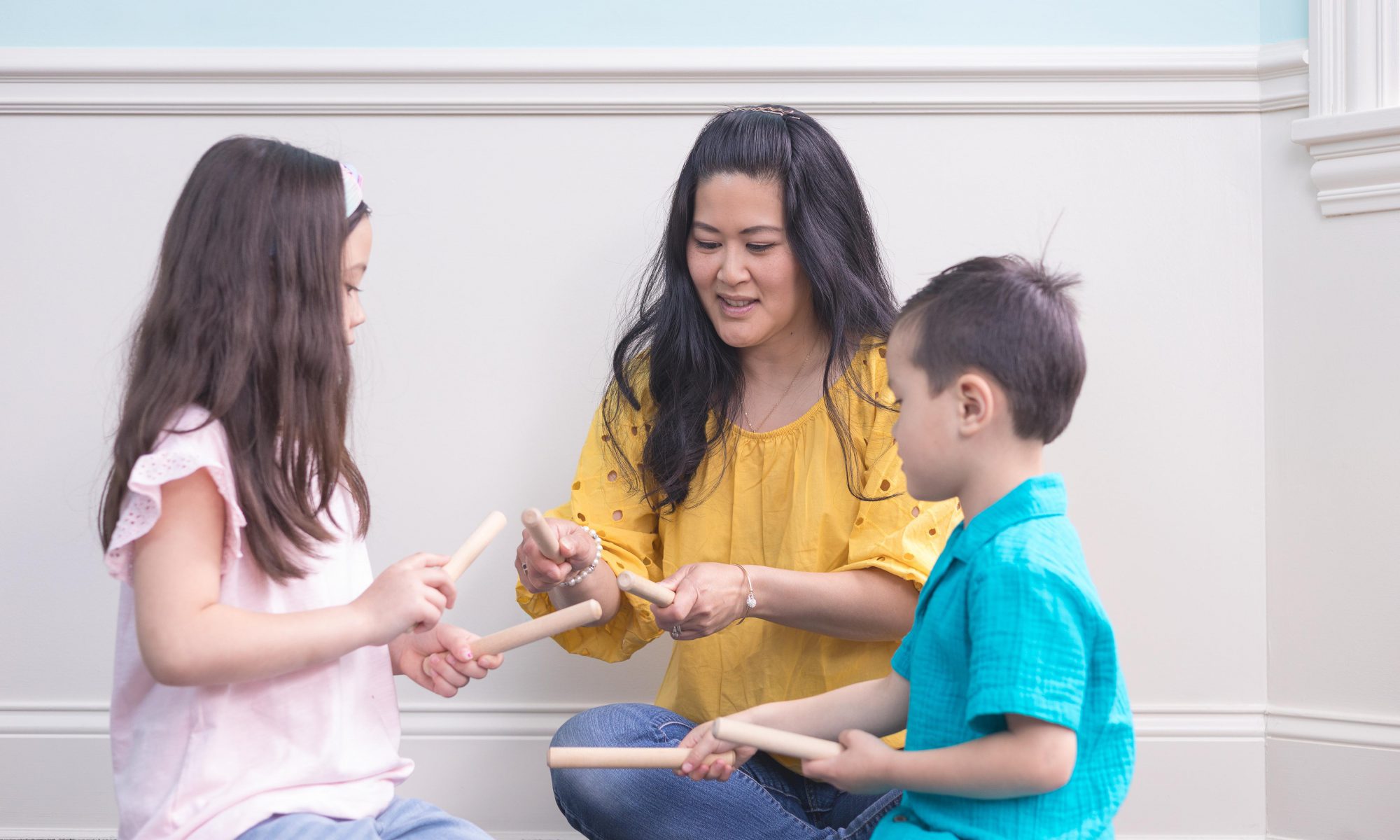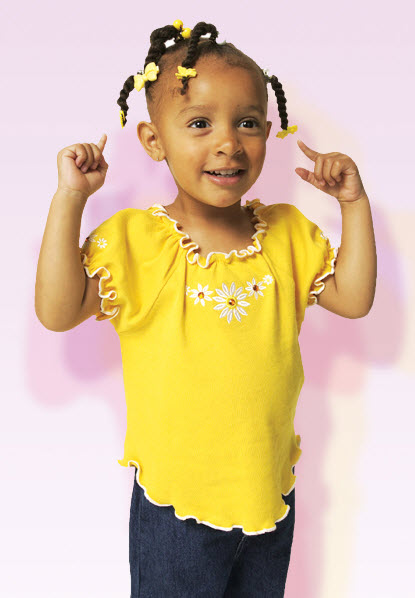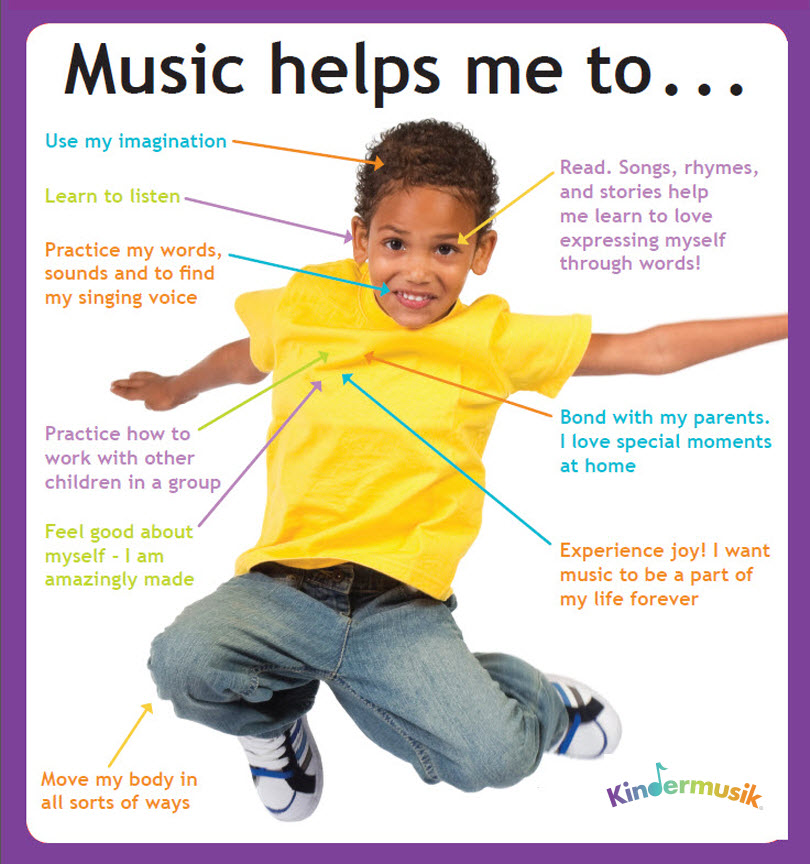Check out Kindermusik’s guest post, featured on the Reading Rainbow blog!

(As we close out “Music In Our Schools” month we’d like to share this very special guest post by our partners at Kindermusik. We hope after reading this you’ll be inspired to check out some of the GREAT books and videos on our new “Music Mountain” island in the Reading Rainbow App! If you haven’t gotten hooked on it already, that is…)
At Kindermusik, we like to say that music and reading go together like milk and cookies or like peanut butter and jelly. Think about it. How many of us learned the alphabet through song, or to count syllables by clapping our hands, or even about the rhythm of language thanks to nursery rhymes?
Reading with children—even infants—20 minutes a day can be one of the most important activities parents do to support literacy development. Being held by a parent during story time promotes bonding, helps young children connect the sounds of words with pictures, and models for children how to read a book. However, early literacy development extends beyond the lap of a parent. It also involves the growth of other key skills such as phonological awareness, auditory discrimination, active listening, and print awareness. Music naturally builds those skills (and more!) in children and makes them hungry for learning and reading!

4 ways music builds early literacy skills
“In our more than 35 years of teaching young children through music, we get the privilege of seeing how music actively engages children of all abilities in the learning process,” explains Michael G. Dougherty, Chairman and CEO of Kindermusik International. “Now, in the past couple of decades, the research is catching up to what we’ve experienced: music impacts literacy development in profound ways. In fact, a new independent study showed that children participating in our own early literacy curriculum for just 30 minutes a week experience a 32 percent literacy gain.”
Take a look at four of the many ways music supports early literacy development.
1. Music supports phonological awareness
In learning how to read, young children need to understand that words are made up of discrete sounds and that these sounds can be used to read and build words. Children with phonological and phonemic awareness show greater success at learning to read. Research indicates that our brains process music and language in similar ways because they share fundamental connections. Consider:
- Spoken language is comprised of a stream of connected phonemes.
- Music is comprised of a series of discrete musical notes or tones.
- Understanding a spoken sentence requires the successful auditory processing of the individual phonemes combined with the intonation communicated by pitch.
- Hearing music requires listening for the individual notes combined with their rhythmic values.
Musical activity: Read favorite nursery rhymes together. Take turns clapping to the rhythms of the words. This helps your child listen for and recognize that words are made up of different sounds.
2. Children practice auditory discrimination through music.
Related to phonological awareness, the ability to sort and categorize sounds strengthens children’s listening acuity or their ability to hear and understand clearly. Music gives children many opportunities to practice auditory discrimination. For example, by exploring the different sounds of drums and labeling them loud or soft, or by dancing fast or slow when the music changes tempo, children practice sorting and categorizing sounds. All this practice ultimately leads to better phonemic awareness and boosts reading abilities.
Musical activity: Using instruments around the house—even wooden spoons and plastic containers—take turns playing loud and soft, fast and slow, or short and long sounds. Label what you hear. Next, put on some music and dance fast or slow. Turn the music up. How would you dance “loud”? How would you dance “soft”?
3. Music promotes active listening.
Children need to learn how to identify and discriminate between sounds and tune into those sounds that matter most. During the school years, children will spend an estimated 50 to
75 percent of classroom time listening to the teacher, to other students, or to media. Developing strong active listening skills prepares children for school readiness, including language and literacy development. Musical activities such as listening for the sounds of the pipe organ in a Bach piece, using the wood blocks to produce a staccato sound, or moving smoothly when the music changes from staccato to legato, helps children practice active listening.
Musical activity: While listening to music together, try to identify all of the instruments in a song. Is that a drum, guitar, violin? What instrument was that? Try this activity using letter sounds. Make the M sound. Ask your child to identify the letter and name an animal that starts with that letter. Take turns.
4. Music classes build print awareness.
Learning how to recognize and read signs and symbols correctly takes practice and is an early step to knowing the letters and corresponding sounds of the alphabet. Both music and reading literacy depend upon a child’s ability to make those connections. Learning to read musical notation uses a similar set of cognitive skills and pattern recognition to those found in reading. In music, a child might explore graphic notation or the relationship between printed symbols and the associated sounds when they see a picture of a large dot and hear or play a loud sound, or when they see a picture of dashes and hear or play quiet sounds.
Musical activity: Put on your favorite songs and draw pictures together to represent what you hear. Ask your child to talk about each creation, including color choices and shapes. The drawings represent the notes heard in much the same way letter sounds correspond to words.
Experience for yourself how music supports early literacy development. Find a local Kindermusik class at Kindermusik.com. You can also visit the Music Mountain island—featuring Kindermusik content—in the Reading Rainbow app!






 Listening to and identifying sounds is the earliest phonological awareness skill and one of the most important pre-literacy competencies. Without this skill, there will be no progress toward phonics, spelling, or text comprehension.
Listening to and identifying sounds is the earliest phonological awareness skill and one of the most important pre-literacy competencies. Without this skill, there will be no progress toward phonics, spelling, or text comprehension.





